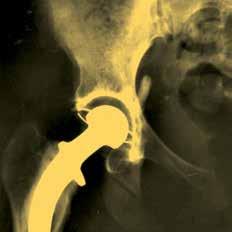
4 minute read
Disability
DISABILITY IN PRISON
Living with a disability can be really tough If you have a disability, the healthcare team at times, especially if you are in prison. Here are there to assist you but you need to are a few tips which should hopefully make make your concerns known to them so that these circumstances a little more bearable. they can offer you the support you need.
Advertisement
The Equality Act 2010 – This act is designed surgery in the community; if you don’t to help stop victimisation, discrimination make an appointment, then the nurses and and harassment related to certain doctors won’t know that you need support! personal/”protected” characteristics. Putting an app in to see the nurse is the
“Protected Characteristics” are particular first step. From this point, all the necessary features that can be used to discriminate referrals can be made. against others. These characteristics are There is a Diversity team in each defined in the Equality Act 2010 section 4 as: establishment, so, please, talk to them l Age and they will be able to advise you on l Disability the provisions that may be available to l Gender reassignment you. Alternatively, you can speak to your l Marriage and civil partnership Offender Manager who is also able to make l Pregnancy and maternity referrals on your behalf. l Race Remember - they are just like the doctors’ l Religion or beliefs The key to accessing disability support in l Sex (female/male) prison is… Communication, communication, l Sexual orientation communication!
ARTHRITIS ARTHRITIS
Ever felt stiff and achy in your knees or elbows? Feel like your body could do with a good old oiling? You may (or may not!) suffer from arthritis.
WHAT IS IT? Arthritis is a common condition that causes pain and inflammation in a joint. There are many types of arthritis but the two most common types are: l Osteoarthritis l Rheumatoid arthritis
Osteoarthritis is the most common type of arthritis in the UK, affecting 8 out of 10 people with arthritis. Osteoarthritis initially affects the smooth cartilage lining of the joint. This makes moving around more difficult than usual and leads to pain and stiffness. Once the cartilage lining starts to roughen and thin out, the tendons and ligaments have to work harder. This can cause swelling and the formation of bony spurs, called osteophytes. Rheumatoid arthritis occurs when the body’s immune system targets affected joints, which leads to pain and swelling. The outer covering of the joint is the first place affected. This can then spread across the joint, leading to further swelling and a change in the joint’s shape. This may cause the bone and cartilage to break down. People with rheumatoid arthritis can also develop problems with other tissues and organs in their body.
WHAT ARE THE SYMPTOMS? The symptoms of arthritis you may experience will vary. Therefore it’s important to have an accurate diagnosis. See a doctor if you have: l joint pain, tenderness and stiffness l inflammation in and around the joints l restricted movement of the joints l warm, red skin over the affected joint l weakness and muscle wasting

WHAT CAN BE DONE? There is no cure for arthritis but there are many treatments that can help slow down the condition. For osteoarthritis, medications are often prescribed, including:
ARTHRITIS
l painkillers l non-steroidal anti-inflammatory drugs (NSAIDs) l corticosteroids In severe cases, a surgical procedure may be recommended. Treatment for rheumatoid arthritis aims to slow down the condition’s progress and minimise joint inflammation or swelling. This is to try and prevent damage to the joints. Recommended treatments include: l analgesics (painkillers) l disease modifying anti-rheumatic drugs (DMARDs) –a combination of treatments is often recommended l physiotherapy l regular exercise
ARTHRITIS – TRUE OR FALSE
1. Arthritis only affects old people 2. Osteoarthritis can develop in children and young people as a result of an injury 3. Arthritis is very rare 4. Arthritis is more common in women than men 5. All in all, there are more than 10 types of arthritis and related conditions 6. Gout is a type of arthritis 7. The most commonly affected joint are those in the hips, hands, knees, and spine 8. If you’re overweight, losing weight can really help you cope with arthritis 9. Being active can help reduce and prevent pain 10. You should try to reduce the stress on your joints while carrying out everyday tasks like moving and lifting ANSWERS 1. False. It affects people of all ages, including children. However, it usually develops in adults who are in their 40s or older 2. True 3. False. In the UK, around 10 million people have arthritis 4. True. In fact, women are 3 times more likely to develop rheumatoid arthritis than men 5. True 6. True 7. True 8. True. Too much weight places excess pressure on the joints in your hips, knees, ankles and feet, leading to increased pain and mobility problems. 9. True - as long as you do the right type and level of exercise for your condition 10. True Source: NHS Choices





